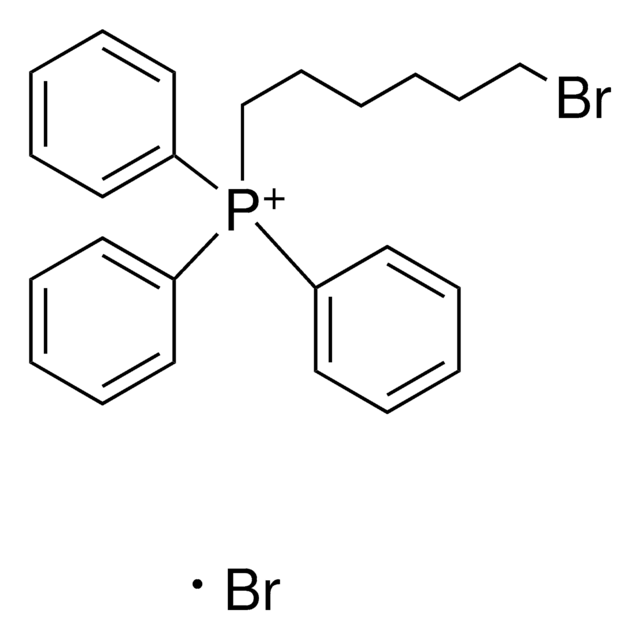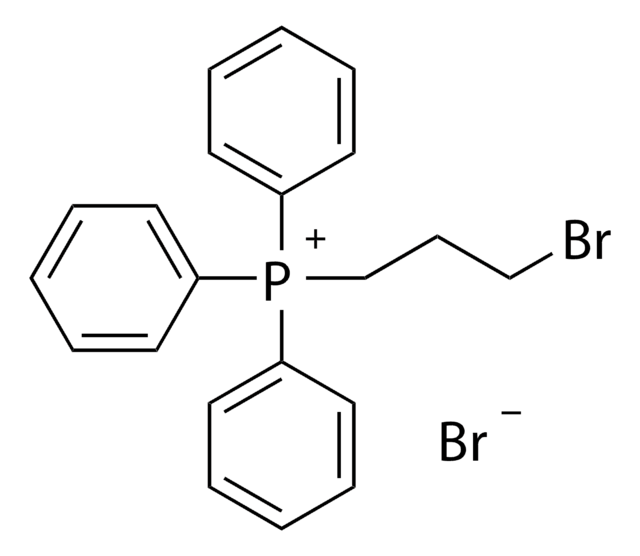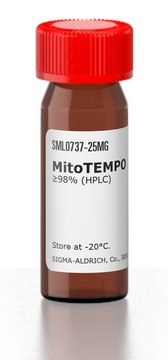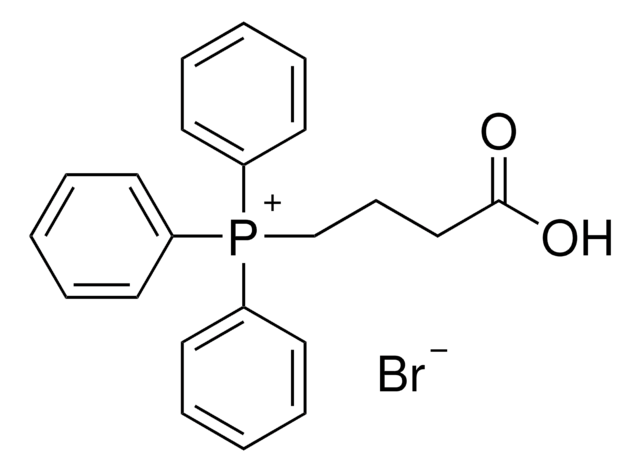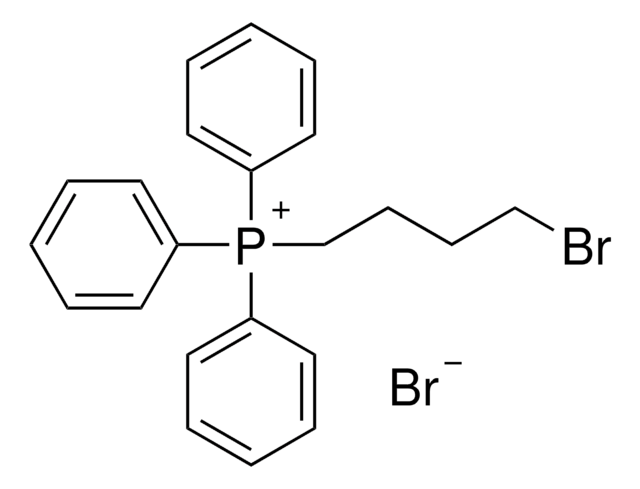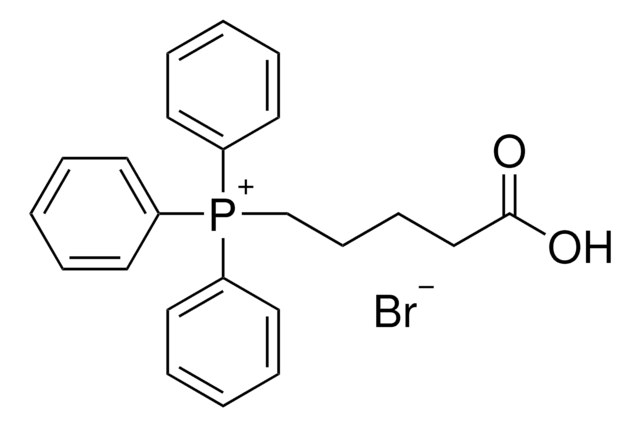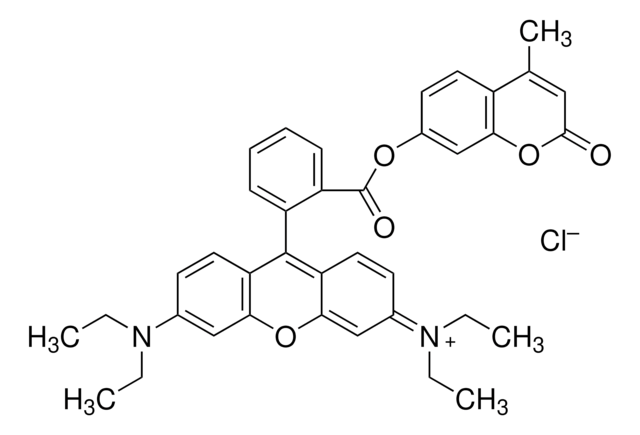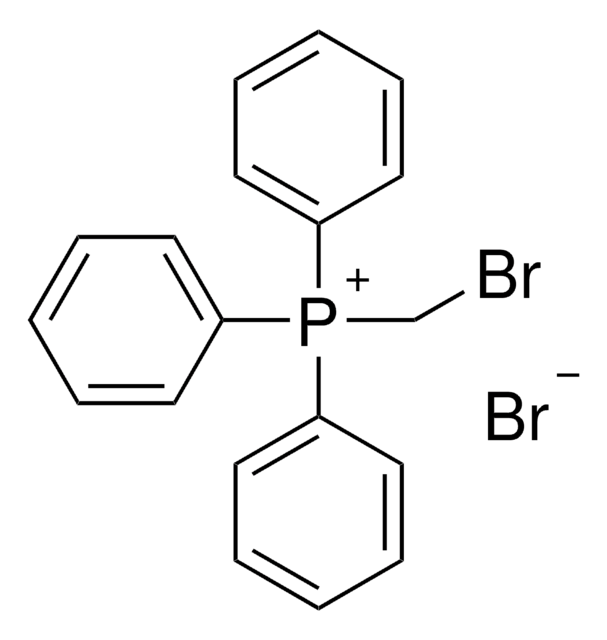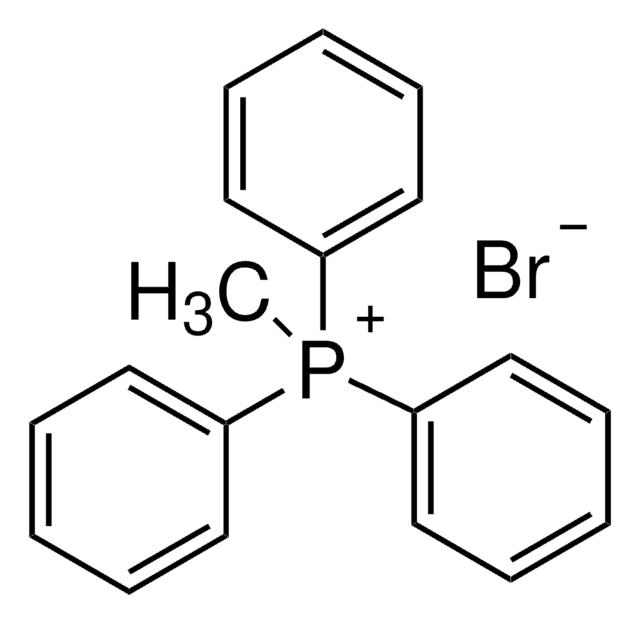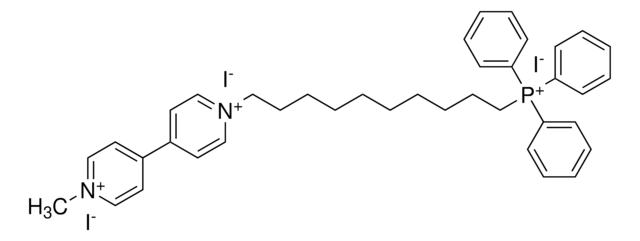905283
(6-Aminohexyl)triphenylphosphonium bromide hydrobromide
≥95%
Synonym(s):
Aminohexane TPP mitochondrial tag, Mitochondria-targeting probe building block, Phosphonium lipocation tag
Sign Into View Organizational & Contract Pricing
All Photos(2)
About This Item
Empirical Formula (Hill Notation):
C24H29BrNP · xHBr
Molecular Weight:
442.37 (free base basis)
UNSPSC Code:
12352101
NACRES:
NA.22
Recommended Products
Assay
≥95%
form
solid
reaction suitability
reagent type: ligand
functional group
phosphine
storage temp.
2-8°C
Application
Mitochondria perform several functions in the cell, and dysfunction has been implicated in various organ systems and disease states, including neurodegenerative disorders and cancers. The targeting of small molecules to the mitochondria can help to probe and better understand this relationship. This aminohexane triphenylphosphine (TPP) tag is conjugated to small molecules to localize them to the mitochondria in cells where the TPP cations facilitate both cellular uptake and accumulation in the mitochondria.
Other Notes
Development of organelle-targetable europium complex probes for time-gated luminescence imaging of hypochlorous acid in live cells and animals
Targeting lipophilic cations to mitochondria
Photoswitchable polyfluorophores based on perylenemonoimide-dithienylethene conjugates as super-resolution MitoTrackers
Targeting lipophilic cations to mitochondria
Photoswitchable polyfluorophores based on perylenemonoimide-dithienylethene conjugates as super-resolution MitoTrackers
related product
Storage Class Code
11 - Combustible Solids
WGK
WGK 3
Flash Point(F)
Not applicable
Flash Point(C)
Not applicable
Choose from one of the most recent versions:
Certificates of Analysis (COA)
Lot/Batch Number
Don't see the Right Version?
If you require a particular version, you can look up a specific certificate by the Lot or Batch number.
Already Own This Product?
Find documentation for the products that you have recently purchased in the Document Library.
Michael P Murphy
Biochimica et biophysica acta, 1777(7-8), 1028-1031 (2008-04-29)
Mitochondrial function and dysfunction contributes to a range of important aspects of biomedical research. Consequently there is considerable interest in developing approaches to modify and report on mitochondria in cells and in vivo. One approach has been to target bioactive
Our team of scientists has experience in all areas of research including Life Science, Material Science, Chemical Synthesis, Chromatography, Analytical and many others.
Contact Technical Service